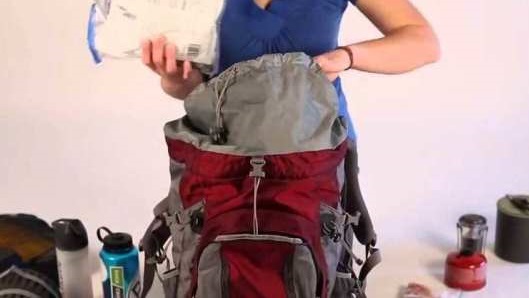
AUTHOR: MAX POLGIN
In the previous part, we talked about the situations in which we will use the emergency backpack. Based on these tasks, it is possible to derive the general criteria that the ES must meet:
1. Compliance with your evacuation plan
Assembling an emergency backpack should not start with a list of necessary things, but with planning your actions. The filling of the PM largely depends on where you will evacuate and in what way. For example, if it is a day’s journey to your evacuation point, a three-day supply of food is no longer so relevant. By the way, let me remind you that ES and a home survival kit are different things.
2. Civilian appearance
No tactical packs, no coyote or oil. In the best case, the tactical backpack will be taken away by the military, in the worst case, they will mistake you for an enemy and kill you. Tourist backpacks in civilian colors are ideal, so that the military is not tempted to take it away. (After all, he is unlikely to need a red backpack).
This also applies to all content – it must be civilian in appearance and not contain the M-Tac or 5.11 logo. If you are searched at a checkpoint, an alarming backpack should not look like a military or guerrilla backpack.
By the way, the presence of a walkie-talkie during a search will instantly make you a spy and a traitor. Even if you use something like this in the basement of a bomb shelter, don’t be surprised if a few “fellow majors” come knocking on you later.
3. Autonomy
An emergency backpack must provide full autonomy in adverse conditions for a minimum of 24 hours. Of course, it is far from a fact that you will have to spend the night somewhere in the forest, but even in a bomb shelter, you will most likely need a sleeping bag and a sleeping bag. Don’t sleep on cold concrete.
4. Possibility of emergency evacuation
This means that the ES should work according to the “grab and run” principle. When the shelling starts, you won’t have time to get the documents out of the closet.
5. Redundancy
Perhaps at some checkpoint you will have to share an expensive Carinthia sleeping bag or a good power bank. Therefore, remembering the principle “2 is 1, 1 is 0”, try to duplicate especially valuable things. Of course, you won’t be able to carry two sleeping bags, but putting an extra rescue blanket won’t hurt.
6. Compactness and minimal weight
The more and heavier the PM will be, the more it will cause envious and greedy looks and the less mobile you will be. I highly recommend using the experience of passenger cars, you can get a lot of useful things from them. By the way, a large but half-empty backpack looks less “rich” than a small but tightly packed one. The standard rule is that the weight of the backpack should not exceed 25% of the body weight.
As you can see, some criteria conflict with each other (like compactness and redundancy), but you know, we don’t live in a perfect world, and you have to find some kind of acceptable balance.
And one more. Collecting an anxious suitcase is not a one-time action, but a real marathon. If you’re collecting your ES for the first time, don’t put it off until you get everything you need. Collect the most primitive ES from what you have at hand, even if you use a shopper instead of a backpack. And gradually improve it.
In the next installment, we’ll discuss what a ES backpack should look like, why you need emergency clothing, and whether EDC can be part of a ES.
Max Polgin was on the call. Take care and subscribe to my Telegram channel.